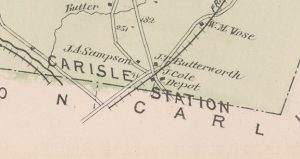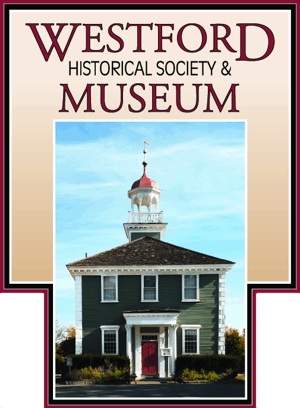The Daniel Chester French Minuteman Statue at Minute Man National Historic Park rests on WESTFORD Granite!
The Minute Man is a sculpture created by Daniel Chester French in 1874, located in Minute Man National Historical Park in Concord, Massachusetts. The development of this work took place between 1871 and 1874 and involved extensive research. Originally, the plan was to make the sculpture from stone, but the medium was later changed to bronze. Notably, the statue was cast using ten Civil War-era cannons that had been repurposed by Congress. The statue is supported by a piece of granite that was quarried by John Cole in Westford.
JOHN COLE, STONE CUTTER
Compiled by Marilyn Day
John Cole, born at Pownal, Maine, 28 May 1830, died at Boston, Mass. 29 August 1889, son of John and Abigail (Haskell) Cole. We have not included his family information in this article except to say, he married and had several children.
John served in the Civil War. He mustered in during Oct. 1864 and mustered out a year later.
John was a stonecutter. This is confirmed in vital records at the births of his three sons and on his death record. While living in Westford, he worked a small granite quarry on the hill located south of his house on Carlisle Road.
In 1875, John Cole was listed in Westford tax valuations owning a house and shed, valued at $600; barn, $300; home place of 40 acres, $775; 2 cows, $80, and 1 horse, $150. His property was in the area at what is now 175 Carlisle Road, the property long known as Dupee’s Tavern. The 1875 map of Westford shows him at the location of the Dupee Tavern.
By 1880 the family was living in Hampden, Penobscot, Maine, where John was, again, listed as a granite worker.

 The interesting piece of history about John is that he quarried the block of granite that forms the base of the Minuteman Statue in Concord. This was done for the Centennial in 1875. Gordon Seavey wrote two articles about the monument. The following is from his 1978 article.
The interesting piece of history about John is that he quarried the block of granite that forms the base of the Minuteman Statue in Concord. This was done for the Centennial in 1875. Gordon Seavey wrote two articles about the monument. The following is from his 1978 article.
“The seven-foot high foundation for Daniel Chester French’s figure of equal height was fabricated in one piece from a small out-cropping of granite in south Westford, near the junction of Routes 225 and 27. The artist in stone was John Cole of the same town and he received the princely sum of $975. [See comment 1 below]
Quarried in one solid block, when finally completed it weighed nearly ten tons estimates Kennard Fletcher of the H. E. Fletcher Granite Co. It probably was delivered ten miles away on a stout wooden wagon hauled by many teams of oxen. [See comment 2 below]
The little quarry from when it came was hardly worked thereafter and has long been abandoned. It lies about 200 feet off Carlisle Road, on Route 225, practically on the Westford-Carlisle town line. Perhaps both towns can take credit for supplying the support to the popular statue.”
Comment 1: The 1875 Concord Town Report contains the report of the Monument Committee. The report shows “John Cole, for pedestal to statue, $975”
He was also paid $25 “for tablet over grave of British.”
Comment 2: No “stout wooden wagon” would hold a 10 ton block of granite. If winter, skids may have been placed under it, and in summer, it could have been moved on rollers pulled by oxen in both instances. Could it have been shipped by train right there from Carlisle Station?
“The committee had decided to use a block of white granite from Westford. The same source of granite had been used in the construction of the Battle Monument. John Cole of Westford split a block “so nearly rectangular and perfect that it almost tempted the Monument Committee to place it under the statue without further work upon it….”
The design for the pedestal utilized the granite block that the town had obtained from Westford. John Cole moved the block to Concord in the winter and as a stone cutter began the work to transform it into the base for the statue.”,
James Elliot Cabot is the architect credited with the overall design of the monument. The granite base is 7.5 feet tall and the sides are 4.5 feet.
James Warren Wilkins, b. at Carlisle, 9 Sept. 1803, died there 27 Feb. 1876. James is the person credited with quarrying the granite for the Battle Monument in Concord in 1836. The granite for the Battle Monument came from the same area in Westford where John Cole quarried his granite.



